
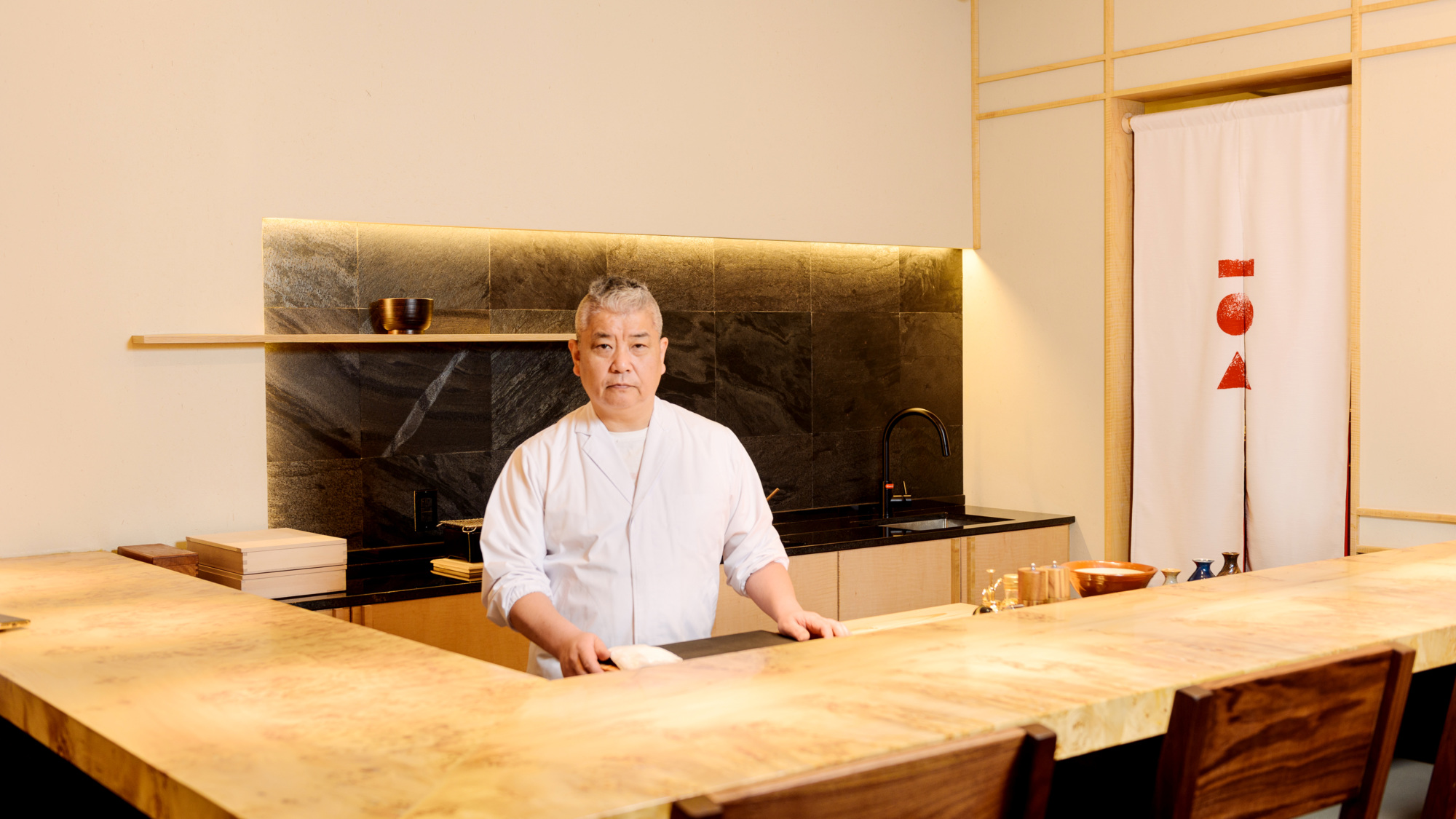
Everything You Need to Know About Kappo Sono, Now Open on the Lower East Side
Before you go to a restaurant, what do you want — or need — to know most? In our series, The Rundown, we’re sharing all the essentials about newly opened (as well as some of your favorite) restaurants.
Here, we’re looking at Kappo Sono, the new kaiseki experience from chef Chikara Sono. Sono built a committed fan base as executive chef at the now-closed, Michelin-starred Kyo Ya, one of the first kaiseki specialists in New York City, from 2007 to 2019 . Now, at a counter tucked inside the back of izakaya restaurant BBF, guests can get the Sono kaiseki experience once again at Kappo Sono. Here’s everything you need to know about the exciting new opening.
1. The menu showcases global ingredients and plays with seasonality.
In Japanese, “kappo” means “to cut and to cook,” and kappo cuisine focuses on balance, with a series of courses showcasing different preparations, from raw to simmered to grilled, and ingredients in different levels of seasonality — from hashiri, or early in the season, to nagori, which is almost past peak.
When diners sit down at the Kappo Sono counter, the nine-course menu ($222 per person) they’ll experience features ingredients “not just from Japan, but all around the world,” Sono says. It might include “hairy crab from Hokkaido, Alaskan King Crab, abalone from Australia, and octopus from South Africa.” Sono seeks to balance color, texture, and seasonality in his dishes and courses: Think black sesame tofu with caviar and monkfish liver in the zensai course, which features a rotating array of small bites, or the grilled sagoshi, or young Spanish mackerel, with a miso marinade, for the yakimono course, which usually includes grilled preparations.
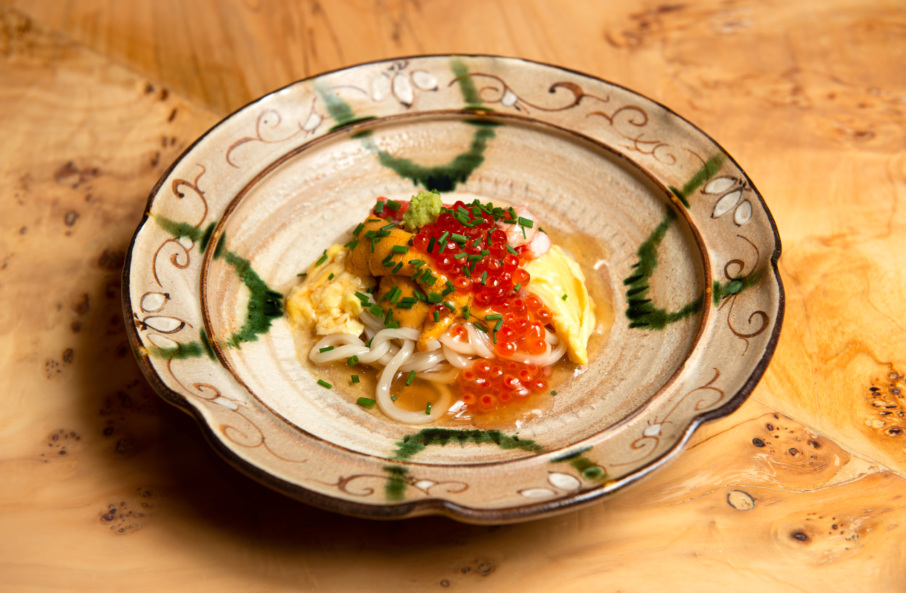
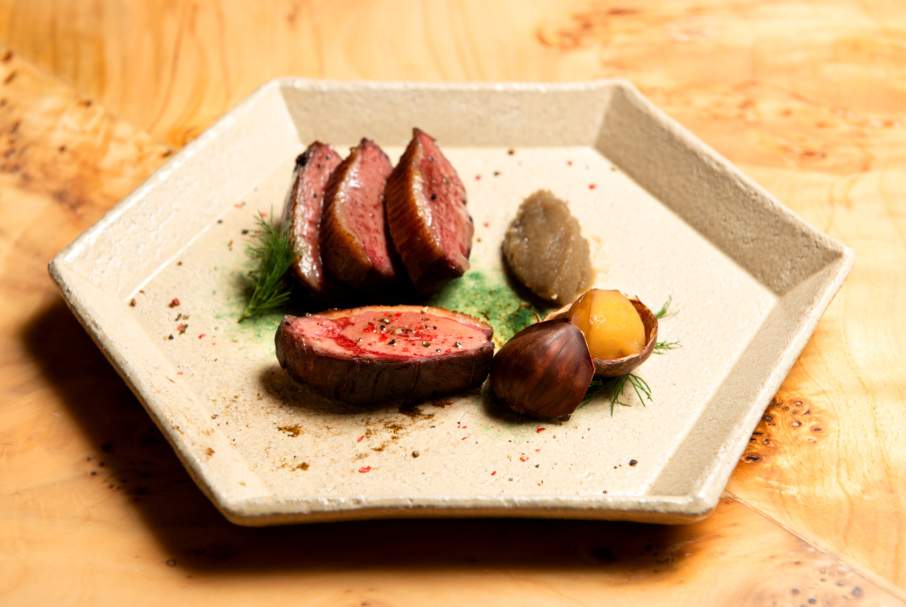
2. The restaurant space was designed to be a refuge.
Nestled in the back of BBF, the 54-seat Lower East Side izakaya that Sono opened last summer, Kappo Sono is designed to evoke the sleek coziness of a Japanese tea room, with a focus on natural materials. The counter is made of mappa burl, and the beige walls get their graininess from diatomaceous earth, which is made of ground aquatic fossils. “Kappo Sono is situated within this busy neighborhood, and within the tavern of BBF, and then you come into this serene, calming place,” Sono says.
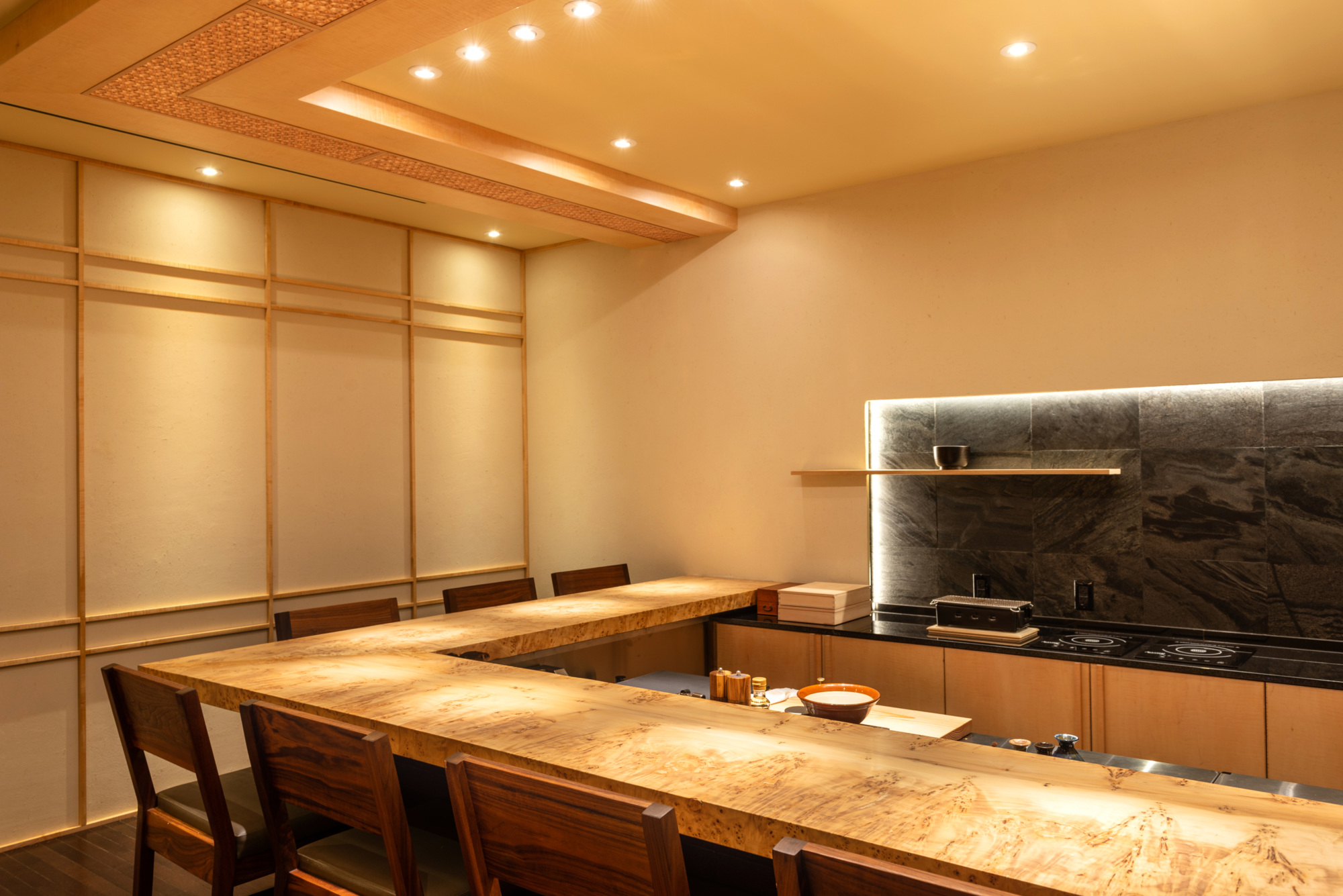
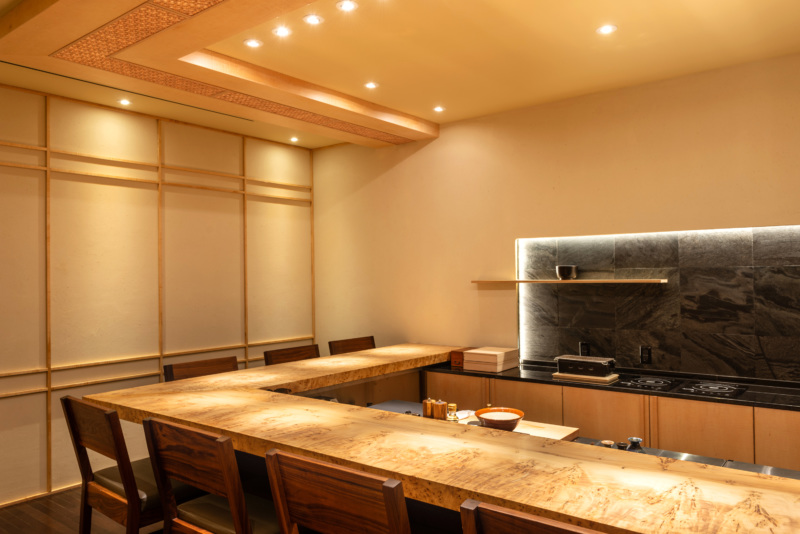
3. Sono partnered with one of the city’s leading sake sommeliers for the extensive sake list.
Sake sommelier Chizuko Niikawa was uniquely qualified to build the sake lists for both BBF and Kappo Sono, not only because of her deep sake knowledge, but also because of her history with Sono. “I was a regular customer at Kyo Ya, so I knew chef’s taste in cuisine and his style,” she says.
At Kappo Sono, she’s put together a selection of bottles ranging from $69 to $960, and by-the-glass options available between $12 and $165. “Most restaurants don’t offer high-end sake by the glass,” Niikawa says, noting her list appeals to anyone “from sake beginner to a connoisseur.” And for the connoisseurs, her reserve sake selection includes high-end bottles such as Juyondai (a cult-favorite brand that’s brewed sake for more than 400 years) and Daishichi’s award-winning Myoka Rangyoku sake.
There’s also a selection of whiskey and shochu, and a special cocktail custom created for Kappo Sono by Nana Shimosegawa, the acclaimed Angel’s Share mixologist: It’s a shochu “lemon sour,” made with a barley shochu iichiko mixed with soda and frozen lemon cut into pieces instead of ice cubes. “It’s refreshingly simple,” Niikawa says.
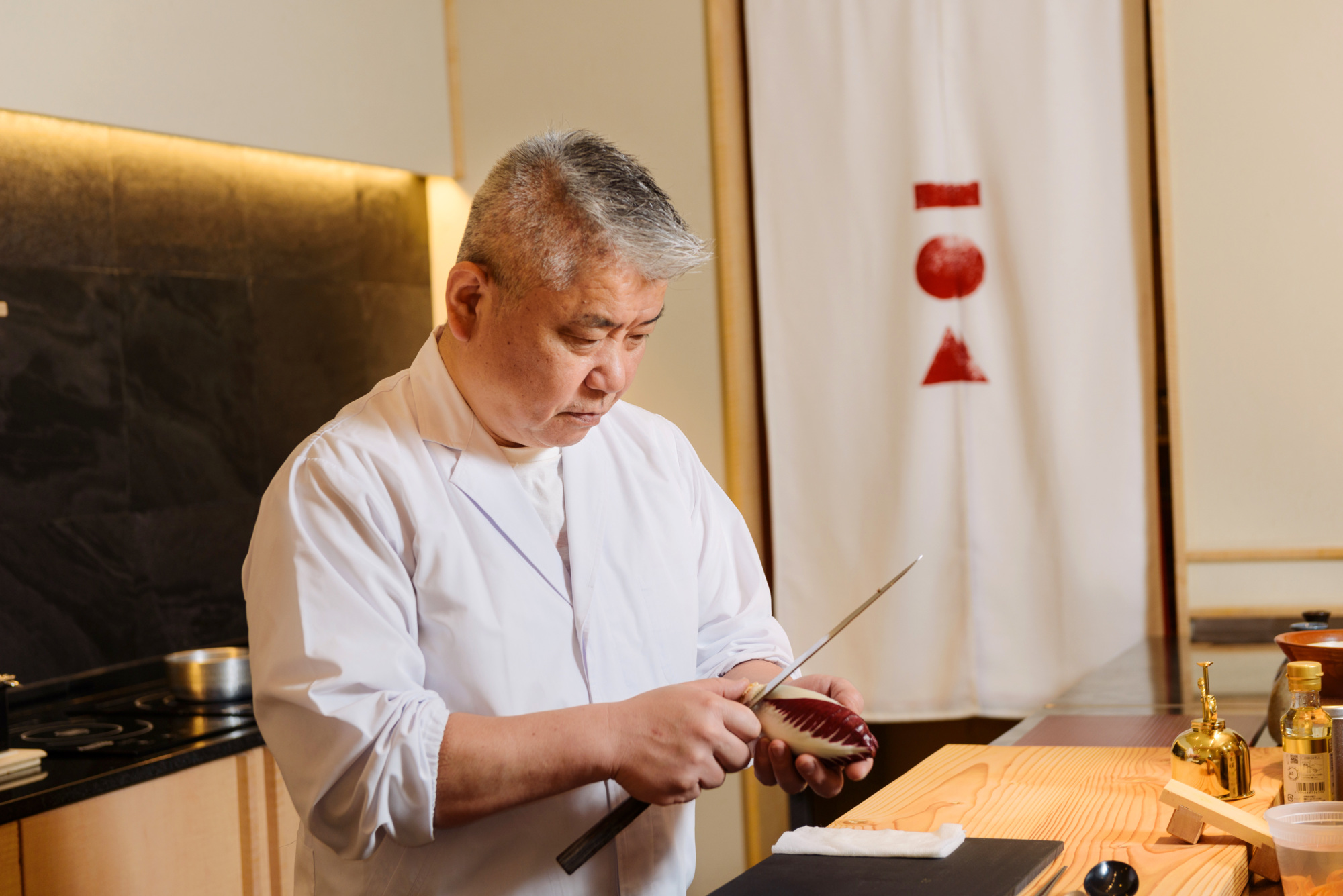
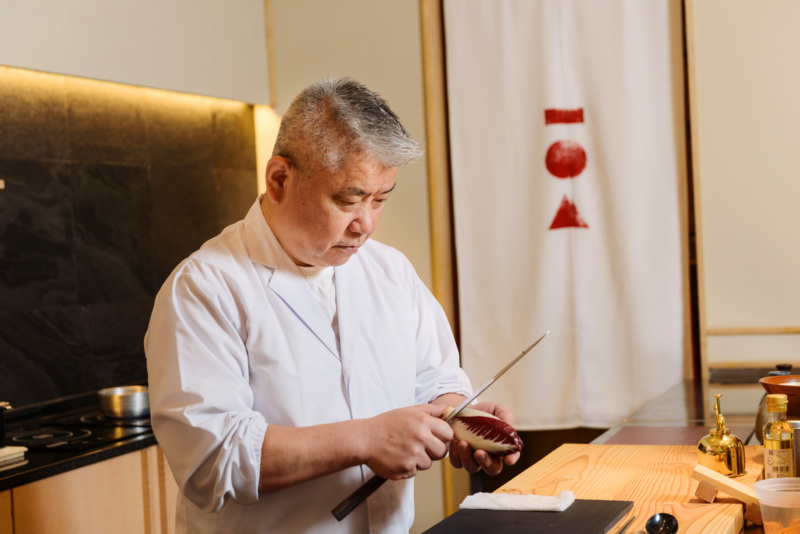
4. It’s going to be one of the hottest (and hardest-to-get) seats in town.
There are just eight seats available at the counter, which is open on only on Sundays and Mondays, meaning just 16 guests will have the privilege of dining at Kappo Sono each week. The limited nature of the restaurant isn’t just a ploy for exclusivity: Practically speaking, Sono currently can serve the tasting menu only when BBF is closed. “Our kitchen is so tight, there’s no space for a dirty dish,” he says.
Reservations open up at noon 108 days in advance, but you might want to bookmark their Resy page in order to secure a spot, and set a Notify. And when you do get a seat, you never know who you’ll meet over the course of the three-hour dining experience. “At Kyo Ya, customers who didn’t know each other would meet at the counter and get to know each other,” Sono says. “These new friendships that formed while dining in front of me are very special.”

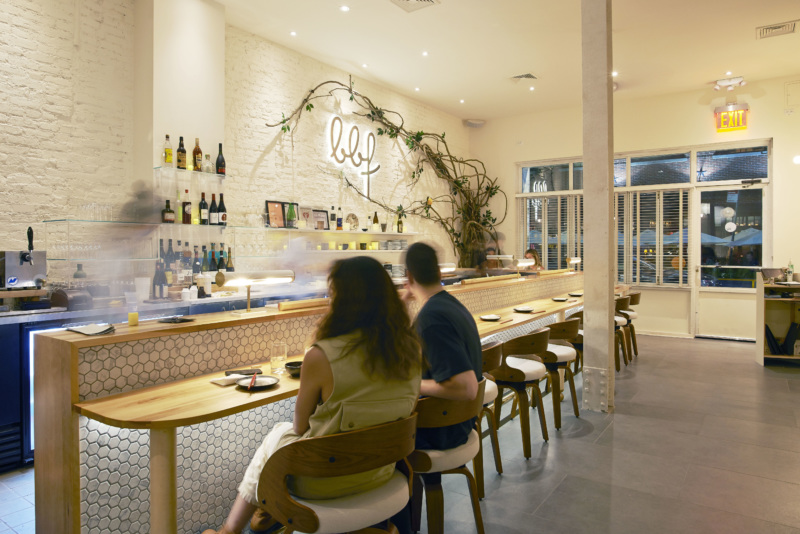
5. But you can still get a taste of Kappo Sono at BBF.
If you’re eager to experience chef Sono’s cooking ASAP, you can book a table at BBF in the meantime. While the restaurants have totally different concepts — Kappo Sono is all about kaiseki while BBF is all about Japanese bar food — Sono says, “Kappo Sono inspires BBF in a way.”
For instance, “inevitably, we receive more ingredients than we need, so we prepare them in different ways and incorporate them into the menu for BBF. Fish for sashimi can be used for sushi, and fish and meat are offered as special items.” The signature dish to order at BBF would be the bite-size “sushi bombs,” also known as temarizushi.
In addition to a full list of cocktails, BBF also has a sake list curated by Niikawa, although, she notes, it’s more targeted towards the “sake newbies.”
Kappo Sono is open on Sundays and Mondays for two seatings, one at 5 p.m. and the other at 8 p.m.
Lauren Vespoli is a New York-based freelance journalist who has contributed to The New York Times, Vox, Atlas Obscura, and more. Follow her on Twitter. Follow Resy, too.
Discover More

Stephen Satterfield's Corner Table















